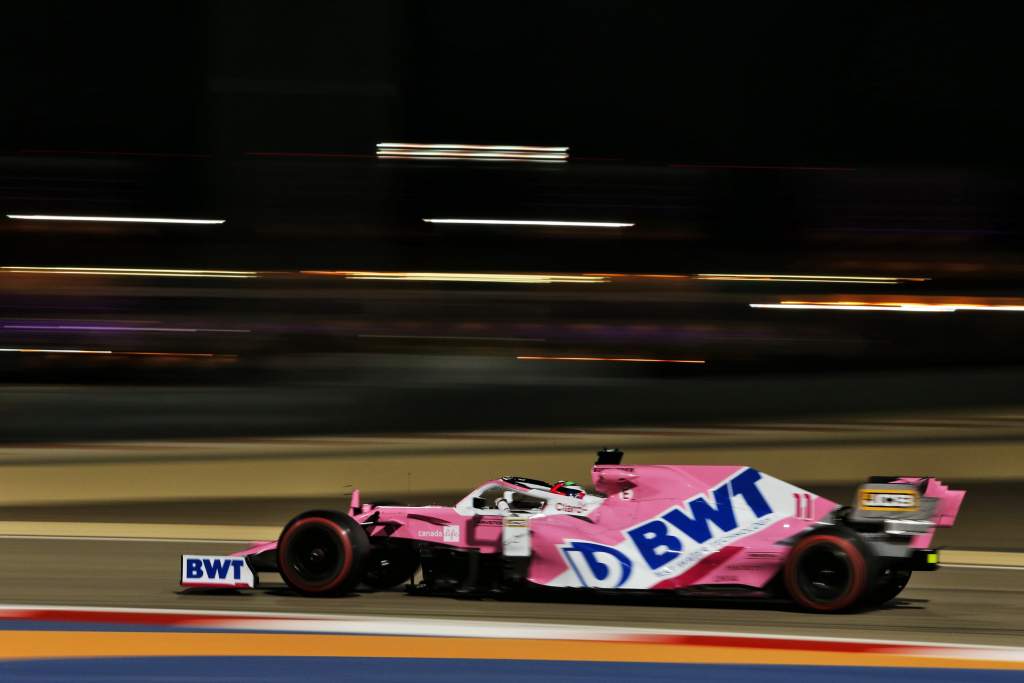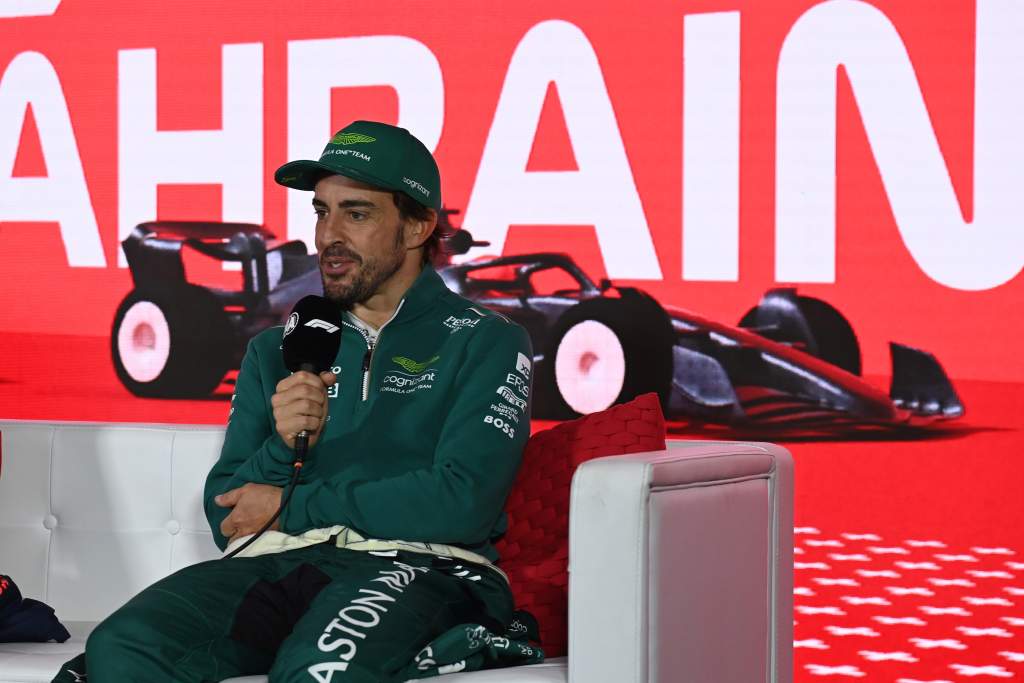Up Next

Fernando Alonso and Aston Martin provided the tonic such a Red Bull whitewash demanded with their charge to the final podium spot in the Bahrain Grand Prix.
Make no mistake, the AMR23 was the second-fastest car at Formula 1’s 2023 season-opener. But for the ground lost when compromised by that first-lap touch from team-mate Lance Stroll, Alonso had every chance of beating Charles Leclerc’s Ferrari to third in a straight fight even before its engine failure.
Which begs the question: what’s the limit for Alonso and Aston Martin? That’s a question that comes with the caveat of cautions, some borne out of Bahrain circumstances, but it’s also one that has far more potentially promising upsides about it, both immediately (for the rest of 2023) and longer-term.
Firstly, that note of caution. As you may have seen over the course of last weekend, Bahrain offers a very particular set of circumstances – this year more than any other in respect of what’s best termed a volatile track surface.
That put cars with particularly good tyre management in a particularly good place. Unsurprisingly, the two cars that ended up on the podium, the Red Bull and the Aston Martin, fell into that category.
It was something both Alonso and Red Bull’s Sergio Perez – who drove previous challengers from the ‘Team Silverstone’ production line (like the below-pictured Racing Point RP20) to great effect by exploiting that trait – highlighted, Perez asserting after qualifying that “we can expect a very strong Aston”.

“I have the same feeling from testing, like [it’s] too good to be true and you are always expecting that you will get a step back and you will get back to reality,” said Alonso in the post-race press conference. “But it seems real, the performance.
“Let’s see in Jeddah; I’m curious to go to Jeddah and Australia, very different circuits. High-speed corners, very little degradation.”
The last line of that answer tells you what you need to know about where that note of caution comes from. Just as the higher deg experienced in Bahrain brought the Aston Martin properly to the fore, so it might well be the case that the advantage it has in this area won’t be anywhere near as exaggerated anywhere else in 2023.
How the AMR23 fares on visits to two very different propositions in Jeddah and Melbourne – tracks that include proper high-speed corners – will be a good indicator of what its true place in the pecking order is.
“In Bahrain we were strong in things that maybe we don’t find in Jeddah and Australia, so if we are strong in the next two races I think we will have a very good 2023,” added Alonso.

Alonso also noted “there are a couple of areas that we have to improve that I will not share”. But as well as then admitting there were “things that they are not 100% tailor-made” for him on the Aston Martin yet – including driving input, feedback from the steering wheel and power assistance – he then, in the following answer, noted in relation to Lewis Hamilton’s same-engined Mercedes and the second Ferrari of Carlos Sainz that “we could not match their straightline speed”.
That much was true, and while that meant we got to see Alonso at his swashbuckling best – catching Hamilton, of all people, off guard up the inside of the Turn 9/10 complex, then getting into the podium places by passing Sainz out of that same complex as the Ferrari attempted to avoid a repeat of that overtake – straightline speed is something Aston Martin will need to work on.
Even in this friendlier era for overtaking made possible by the 2022 ground effect rules reset, DRS remains the most effective way of passing. That will also provide a truer test of Aston Martin’s set-up range.
If that doesn’t provide sufficient opportunities, then perhaps instead that puts an even greater emphasis on Aston Martin’s qualifying performances if it wants to stay at the front. Trouble there is, single-lap pace appears the weaker of the AMR23’s traits. Combine that with tracks that perhaps don’t enhance its tyre life-extending qualities and it’s not so hard to see the Aston Martin slotting in behind what is likely to be a more competitive Ferrari in the coming weeks.
But Alonso’s ‘answer’ about where Aston Martin needs to improve also included a bullish statement about its potential ceiling.
“The most important point is that the new Aston Martin is just a new car, a new project. This is just the beginning,” he said.

“This is not the final car, this is just the starting car of this concept that we changed over winter.
“I think some of the top teams, they just kept the philosophy that they had last year. Red Bull or Ferrari, they kept more of the same shapes. Just, fine-tuning things and making perfection of that good baseline that they had.
“For us, it was much more difficult. We have to change 95% of the car. So, I guess there is more to learn from the car, and there is more to come on our side. So full trust in our team, obviously they know what they do. So let’s hopefully improve soon.”
Sounds a bit ominous – “this is just the beginning”.
It wouldn’t be the first time such positive words from Alonso offer a false dawn, but it also chimes with technical director Dan Fallows’s assessment – down to the “95%” new claim – of Aston Martin’s potential, even if he feels “we need to lean on” the team’s historic ability to punch above its weight for now.
But having that much headroom goes against much of the pre-season rhetoric. When it was unknown how Aston Martin would compare to the top three, even with top-end estimations of becoming the fourth-best team in mind – ones it has seemingly exceeded – there was a perception that it might not have as much room for manoeuvre as Ferrari, Mercedes, and perhaps, say, Alpine.
Would you bet on that being the case now? Based on the giant leap it’s made over the winter, something it achieved while also successfully developing a tricky 2022 car into a regular points contender, and the cul-de-sac Mercedes finds itself in when it comes to developmental potential with its W14, perhaps that’s not as big a concern as it might have been two weeks ago.

Development ceiling and having the resources to achieve that are of course two different things. But remember, this is also a team that thanks to F1’s aerodynamic testing restrictions rules will have more windtunnel time at its disposal in 2023 (even if Alonso is quick to note: “But we will not get much next year!”).
That all adds up to Aston Martin being very far advanced compared to expectations. And that’s where things get really interesting.
Alonso’s not been afraid to proclaim his faith in the Aston Martin project from the get-go; sometimes this comes across as having a Machiavellian motive, but it is undoubtedly sincere considering his decision to jump ship from last year’s fourth-best team, Alpine.
At the same time, he’s always been cautious to note that while he is adamant the team will be a championship challenger, that might not be something that happens during the 41-year-old’s remaining years as an F1 driver.

But we’re inevitably ahead of that schedule now. Fighting for and securing podiums is what might have been expected at the end of Alonso’s time with the team (Alonso has a two-year deal with the option for a third). If the combination is able to achieve that now, what might it be capable of a season or two down the line, as its new recruits continue to gel and its windtunnel comes online (in 2024)?
Bridging the divide to the top teams – let alone beating two of them – was an incredible step for Aston Martin to take over one winter.
There’s every reason to believe this is no flash in the pan, and that this start can act as the springboard from which the team becomes a bona fide frontrunner.
All the better if its talisman is there to reap the rewards.






